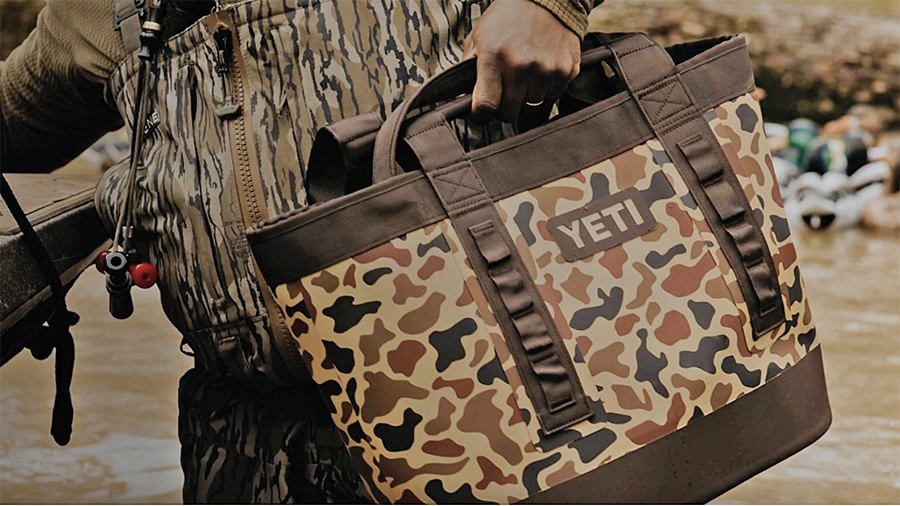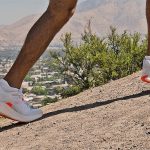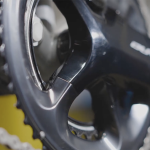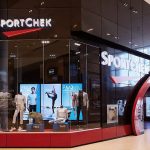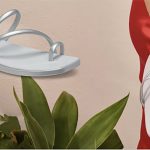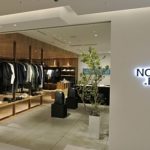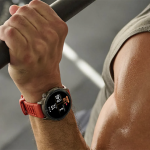Yeti Holdings, Inc. President and CEO Matt Reintjes told analysts on a conference call that the company is making excellent progress on its long-term strategic priorities, driving innovation, expanding its global presence and broadening its customer base. In the near term, he said they were transforming the supply chain.
“These efforts are delivering results in several ways,” Reintjes explained on the Thursday, August 7 call to discuss second quarter results. “We’re seeing increased momentum in product innovation with notable strength in bags and packs. Our international expansion is thriving with outstanding performance in the U.K. and Europe and strong demand from our end consumers in Canada and Australia.”
Our brand continues to grow, resonating with audiences, both at home and around the world. At the same time, we’re executing a major transformation in our supply chain that is setting us up extremely well for 2026 and beyond.
Reintjes said the top line came in slightly below expectations in the quarter, reflecting ongoing macroeconomic uncertainty and cautious behavior from consumers and retail partners.
Second quarter sales decreased 4 percent year-over-year (y/y) to $445.9 million, which was said to be slightly below company expectations. Company CFO Mike McMullen said the decline was due to more cautious spending from both consumers and Yeti’s retail partners.
“We believe the actions we’re taking position us extremely well for long-term sustainable growth in both revenue and earnings,” Reintjes added.
Product Innovation Focus
Reintjes said Yeti is on track to open an Asia-based innovation center in Thailand later this month.
“I had the opportunity to visit and meet with our local team in July, and I came away energized by their talent, passion and capabilities,” he shared. “This facility will complement our Austin Innovation Center, significantly increasing our speed and capacity for product development and further enhancing our innovation capabilities.” He said the center also marks a critical step towards establishing a 24/7 global innovation cycle, continuous product generation, faster time to market and greater agility in responding to market opportunities.
Second, Reintjes said the Yeti teams continue to execute exceptionally well against a robust innovation pipeline.
“As a result of the up-tempo pace of innovation you have seen, we’re now on track to exceed our prior target of launching 30 new products in the fiscal year, even while making strategic trade-offs to advance supply chain diversification,” he continued. “A large portion of these new launches are limited to initial releases, setting a stage for the full force of our innovation to power our growth in the quarters ahead.”
The CEO suggested that in Drinkware, while the market remained highly promotional and continues to shift away from the recent trend-driven growth, Yeti remains focused on broadening its portfolio in sustainable innovation while maintaining discipline on high-quality, profitable growth.
“We are seeing this play out in response to our first food bowls, insulated food jars, updated rambler jug and travel bottle,” he outlined. “We expect similar momentum later this year as we expand into our new half-gallon and 40-ounce sports jugs. Meanwhile, straw bottles and stackable cups continue to perform well for us.”
Reintjes said the underlying innovation in Drinkware is performing well, and Yeti expects to return to growth later this year as the market stabilizes, driven by the brand’s innovation and market leadership in the overall Drinkware category.
He shared that the company recently acquired designs, tooling and intellectual property to enable it to bring a patented, category-leading shaker bottle into the Yeti family.
“This innovation fits seamlessly with our commitment to delivering premium high-performance products,” Reintjes said. “Moreover, our accelerating innovation and launch of exciting new products under the Yeti brand showcase how we leverage open innovation in combination with our powerful internal product development machine.”
Channel and Region Summary
DTC Channel
Direct-to-Consumer (DTC) sales decreased 1 percent y/y to $248.6 million, reportedly accounting for approximately 56 percent of total sales during the second quarter.
“Our Amazon marketplace remains strong, both in the U.S. and internationally, as we leverage our omni-channel model and supported it with a strategic allocation of marketing dollars,” McMullen stated. “Corporate sales also remained robust in the U.S. with momentum building internationally following the recent global rollout of customization and as we add strategic partnerships around the world.”
McMullen said strong performance in the DTC channels was offset by softer U.S. e-commerce demand.
“We saw lower-than-expected conversion on Yeti.com, which offset both higher average order value and higher traffic year-over-year,” he shared.
“In retail, we opened our 27th store in early June and plan to open our 28th store next week, which will be our last store opening for the year,” Reintjes added. “While we remain very excited about the long-term retail potential for us, we are intentionally slowing the pace of new store openings in the near term. Our focus is on optimizing the performance of our existing fleet as we continue to see the positive impact on lift in our Wholesale and Direct channels in locations where a Yeti retail store anchors the market. I fully expect future pace store expansion to be part of Yeti’s complementary go-to-market.”
Wholesale Channel
Wholesale channel sales decreased 7 percent y/y $197.3 million in the quarter, with declines in both the U.S. and International regions.
McMullen said the year-over-year decline within the company’s Wholesale channels outside the U.S. was driven by ordering patterns by some of the retail partners.
U.S. Wholesale Segment
“In the U.S. Wholesale channel, the primary driver of the year-over-year decline was Drinkware, reflective of the highly promotional overall market and an increased level of caution from consumers and our retail partners,” McMullen elaborated. “We believe this is a transitory issue indicative of macroeconomic headwinds.”
He said Yeti’s strategy to broaden its Wholesale channel and drive engagement with a wide range of consumers across markets, pursuits and demographics remains unchanged. The CFO noted that sell-through growth outpaced sell-in growth in the U.S. in Q2, and the company’s overall channel inventory levels remain healthy, giving them confidence in their back-half expectations.
International Segment
Sales outside the U.S. grew 2 percent y/y to $78.1 million in Q2, said to represent approximately 18 percent of total sales in the period.
“Europe continues to lead our international performance with another quarter of strong growth year-over-year,” McMullen noted. “Our efforts to build brand awareness, expand distribution and scale our omni-channel model in Europe are gaining traction.” He said expansion in Japan during the second quarter marked an exciting step in the Asia Pacific region, and the company is “very optimistic” about the growth opportunity in the market.
“Within our International markets, direct-to-consumer sales remained strong. However, our International Wholesale channels, primarily in Australia and Canada, were more challenged from a sell-in perspective,” McMullen said. “We believe this is a one-quarter dynamic that was driven by inventory balancing and overall caution by our wholesale partners in these two regions.”
International Expansion
CEO Reintjes called out international expansion as the second key growth pillar for Yeti going forward.
“I’m pleased with how the Yeti brand continues to resonate strongly outside the U.S., supported by a growing diversified product portfolio and disciplined execution of our go-to-market strategies,” he shared.
“Europe once again delivered very strong growth in the quarter,” the CEO noted. “This reflects both rising brand awareness and the effectiveness of driving engagement with our localized approach. We believe our model is scalable and will support sustained growth across the European market.”
In Japan, late in the quarter, Reintjes said distribution rapidly expanded from 17 to over 270 doors, and the brand is targeting more than 400 doors by year-end.
“We’ve also established a digital presence and initiated localized marketing to build awareness and engagement,” he added. “In early July, we hosted our second successful trade show in Tokyo, drawing nearly 400 buyers, media and influencers, highlighted by strong enthusiasm and pent-up demand. As we move into the second half of the year, we’re focused on executing our go-to-market, supported by strong alignment between the Yeti brand and Japanese consumers’ appreciation for premium, well-crafted product.”
Reintjes said he is optimistic about Japan and the rest of Asia’s long-term potential as a meaningful contributor to Yeti’s international growth.
In Canada, the CEO said the brand is seeing sustained end consumer demand even in a “cautious” wholesale sell-in environment. Localized marketing and strong performance from new innovations and color infusions have driven brand interest and momentum.
CFO McMullen added that sell-through in both Australia and Canada remains very strong, which gives Yeti the confidence to maintain its International segment sales outlook for the year.
“While certain retail partners slowed their purchasing during Q2 against expanding consumer demand, we’re encouraged by the rebound we have seen quarter-to-date in Q3,” Reintjes suggested.
“Looking ahead, the momentum we’re seeing across global communities underscores the significant opportunity to further penetrate new and existing markets,” he said, wrapping the international conversation. “To that end, we’re making incremental investments behind both brand and social campaigns to increase reach, frequency and engagement as we expand our customer base and strengthen brand equity worldwide.”
Category Summary
Drinkware Category
Drinkware sales declined 4 percent y/y to $236.4 million in the second quarter. Drinkware growth in Yeti’s International regions was said to be more than offset by a decline in the U.S. region, reflecting a challenging promotional market and inventory constraints driven by the company’s supply chain transition.
Still, McMullen said they continue to be pleased with how new products are performing.
Coolers & Equipment Segment
Coolers & Equipment sales decreased 3 percent y/y to $200.6 million in the second quarter.
“We saw continued growth in hard coolers, offset by a decline in soft coolers,” McMullen detailed. “Our bags business gained further traction as we expanded our product lineup and capitalized on the significant opportunities within the bags and packs market.”
Reintjes pointed to the brand’s new, smaller-format Daytrip soft coolers, priced between $50 and $150, which complement Yeti’s high-performance soft coolers, priced between $200 and $350.
“The data has demonstrated impressive early traction even with limited inventory in the second quarter,” he shared. “Higher-priced soft coolers were more challenged in the quarter as we saw some evidence of consumer trade down. While we expect the higher-end products to be staples of our portfolio long term, we are pleased with our strategy to capture a consumer up and down the price and performance ladder.”
The CEO said they also extended their “highly regarded” chairs with the brand’s first beach chair, which he said, “launched just in time for the peak summer.” Some retailers may argue that it hit too late for maximum return. “In addition, our Roadie 15 and wheeled Roadie 32 hard coolers, which launched a strong reception more than a year ago, have continued to see great performance,” Reintjes noted.
Bags & Packs Category
Reintjes said the brand’s momentum in Bags and Packs is “unmistakable.”
“Our rugged all-weather Cayo backpack debuted in late Q2 to rave early reviews and exceeded our initial expectations,” he detailed. “Meanwhile, the Ranchero backpack introduced in Q1 continues its ascent, recently clenching the title of Best Outdoor daily pack by Men’s Health. These wins not only underscore our relentless commitment to innovation but also cement our leadership in delivering performance-driven, highly sought-after gear supported by a broad brand umbrella.”
Reintjes said that the performance of Yeti’s long-standing Camino totes and Crossroad backpacks was “equally exciting.”
“Camino has experienced a notable spike recently, is mostly sold out domestically across all channels, including Yeti.com and wholesale,” he said. “For context, Camino launched in 2018 and has garnered over 5,000 4.8-star reviews.
He said the broadening consumer interest highlights the product’s incredible design and styling backed by practical versatility and durability.
“With a large market opportunity in bags and Camino innovations on the horizon, we’re well-positioned to build on this momentum and deliver meaningful growth over the long term,” Reintjes said. He suggested that the wave of enthusiasm for Camino is creating a halo effect for the brand’s softgoods efforts, fueling elevated interest across Yeti’s bags and packs lineup.
He appeared to suggest that the legacy strength of the Coolers & Equipment business provides cover for the Packs & Bags business as it develops.
“Overall, we expect our Coolers & Equipment business to perform well in the back half as our bags category continues to build and inventory availability for our innovation improves,” Reintjes offered.
Sports Licensing Opportunity
The CEO shared that the third key growth pillar is a focus on broadening Yeti’s global customer base.
He announced on the call that Yeti entered a strategic partnership with Fanatics, launching later this month.
“This collaboration significantly expands our presence in sports. Additionally, we are bringing team color Drinkware and hard coolers to fans across all 32 NFL teams, many MLB, NHL and over 50 NCAA programs,” he explained. “Our products will be available on Yeti.com, Yeti stores, certain wholesale partners, fanatics.com, league and team sites and at live events, further strengthening our connection with passionate fan bases and driving long-term growth in this vertical.”
Tariffs and Supply Chain
Reintjes said the company remains firmly on track with its accelerated diversification strategy.
“I’ve had the opportunity to visit all of our key suppliers across Southeast Asia factories and witnessed firsthand the incredible progress being made,” he shared.
“We continue to expect that by year-end, on a go-forward basis, less than 5 percent of our total cost of goods sold will be exposed to U.S. tariffs on goods sourced from China,” Reintjes revealed. “Importantly, we will have our multi-country sourcing strategy fully in place. This is a testament to outstanding vision and execution by our product and supply chain teams.”
He said that this positions Yeti “exceptionally well” to enter 2026 with a more resilient, agile and diversified supply base that enhances Yeti’s ability to scale globally while mitigating geopolitical and operational risk.
“Amid a dynamic environment, our fortress balance sheet and healthy free cash flow continue to support investments in growth and innovation, while also advancing our capital allocation priorities, including share repurchases,” the CEO commented.
Outlook
Reintjes disclosed that Yeti is “modestly adjusting” its top-line expectations to reflect a “slightly more prolonged recovery” in the Drinkware market in the U.S. “At the same time, we’re raising our EPS outlook, thanks to our operating discipline and tariff relief on the China-sourced goods, partially offset by new tariffs elsewhere.”
The CEO stated that the unprecedented tariff uncertainty and shifting macroeconomic landscape have prompted the company to reschedule its targeted late 2025 Investor Day to the first half of next year.
“This timing, importantly, will allow us to showcase the full impact of innovation acceleration in our broadening product pipeline, the capabilities of our diversified and resilient supply chain and provide a clear view of our long-term growth and margin expansion initiatives,” Reintjes explained.
Full Year Outlook
“We now expect full year sales to be flat to up 2 percent as compared to fiscal 2024 Adjusted net sales,” confirmed CFO McMullen. “Consistent with last quarter, we expect inventory supply disruption in connection with our supply chain diversification efforts to have an approximately 300 basis point impact on our growth this year. The primary driver of the change in our top-line outlook is the performance of our Drinkware business in the U.S.”
Yeti now anticipates its Drinkware business to be in a range of flat to down low-single digits in fiscal 2025 versus the 2024 reported figures.
From a channel perspective, Yeti still expects its Wholesale and DTC channels to grow in line with each other for the year. Geographically, the company maintained its outlook for the International business to grow between 15 percent and 20 percent in fiscal 2025.
“As I stated earlier, the growth dynamics that we saw in Q2 were largely due to timing within our International Wholesale channel,” McMullen reiterated. “We expect the strong consumer demand trends that we saw outside the U.S. in Q2 to continue and to drive overall growth in the back half of the year.”
Within the U.S., Yeti expects its total business to be down in the low single-digits this year, primarily due to the dynamics discussed in the Drinkware category.
“As it relates to phasing for the remainder of the year, for Q3, we anticipate that total sales will be in a range of flat to slightly positive versus last year with a decrease in Drinkware balanced by growth in Coolers & Equipment,” McMullen added. “We are encouraged by the momentum we saw exiting Q2 and what we have seen quarter-to-date in Q3.”
Looking ahead to the fourth quarter, Yeti expects a slight improvement in total growth with growth across both the Drinkware and Coolers & Equipment categories.
“When we look at the pipeline of new products that we have slated for release later this year, it gives us the confidence that Drinkware can return to growth in Q4,” the CFO suggested.
Yeti is now projecting gross margins for the year to be between 56.5 percent and 57.0 percent of sales, representing an increase of 200 to 250 basis points compared to the prior fiscal 2025 guidance.
“This improvement is due to changes in tariff rates since our last update as well as our ability to drive cost efficiencies while undergoing a significant transformation of our supply chain,” McMullen said. “Trade policy discussions are ongoing, and the ultimate outcome regarding tariff rates remains unknown.”
Yeti is currently assuming that the latest tariff rates, as announced, will remain in effect through the end of the year, including a total 30 percent rate on goods from China and an approximately 20 percent rate on goods from other regions. Collectively, the net tariff costs included in this outlook is approximately $40 million or 220 basis points as a percent of Adjusted sales.
“From a phasing perspective, we continue to expect the year-over-year impact of tariffs to grow progressively throughout the year,” the CFO suggested. “We now expect operating expense growth of between 2 percent and 4 percent versus the prior year. This reflects the impact of ongoing investment in our growth initiatives, partially offset by continued cost optimization.”
He said the company now expects operating income for the full year to be between 14.0 percent and 14.5 percent of Adjusted sales, including a net impact of approximately 220 basis points from higher tariff costs compared to the prior year.
“We expect a year-over-year decline in operating income percent to be relatively consistent in Q3 and Q4. Below the operating line, we expect an effective tax rate of approximately 25.5 percent, slightly better than our prior guidance,” he added.
Yeti now expects full year 2025 diluted shares outstanding of approximately 82 million, which reflects the impact of $200 million of stock repurchases anticipated through this fiscal year-end.
“We now expect adjusted earnings per diluted share of between $2.34 and $2.48 [for the year] as compared to $1.96 to $2.02 in our prior outlook,” McMullen confirmed. “The increase in our EPS outlook reflects the lower tariff rate on China-sourced goods, partially offset by increased tariffs on imports from other regions since our last update. And our updated guidance includes close to a $0.40 net unfavorable impact from higher tariff costs versus the prior year.”
Capital Expenditures (CapEx) for the year are now projected to be approximately $50 million, down from an earlier estimate of $60 million. This reduction is primarily attributed to a change in accounting treatment for capital investments in Yeti’s Memphis distribution center, which will now be classified under cash flows from financing activities rather than investing activities.
“It’s important to note that this year’s capital spending remains focused on advancing our technology, launching innovative products and strengthening our supply chain,” McMullen added.
The company now expects free cash flow of between $150 million and $200 million in 2025, compared to its prior outlook of approximately $100 million to $125 million.
“As it relates to year-end inventory, we continue to expect a decline year-over-year,” the CFO noted. “As we move through the second half, we will maintain flexibility to increase our inventory based on our assessment of the market conditions.”
Reintjes said he remains highly confident in Yeti’s strategy and direction, and that the team will deliver on Yeti’s potential.
“To emphasize the point, the strength of our brand is a key differentiator, resonating deeply with a growing base of loyal customers around the world,” he continued. “We’re in the early phase of realizing the impact of product expansion and a significant global opportunity providing substantial runway for growth. We have built a tested, proven and resilient business model.”
Image courtesy Yeti Holdings, Inc.

